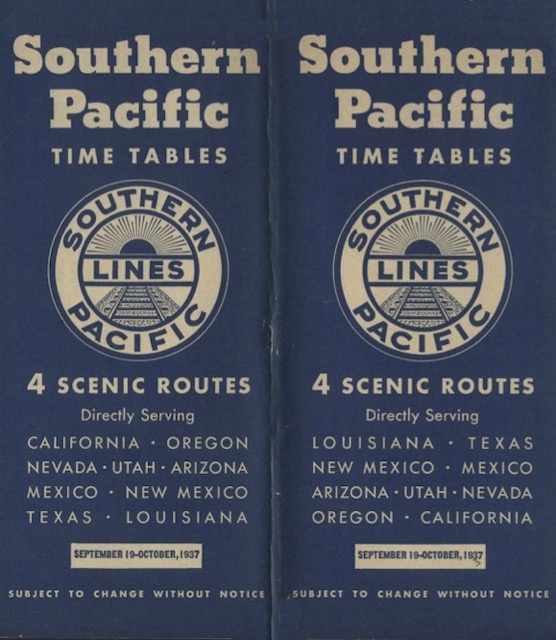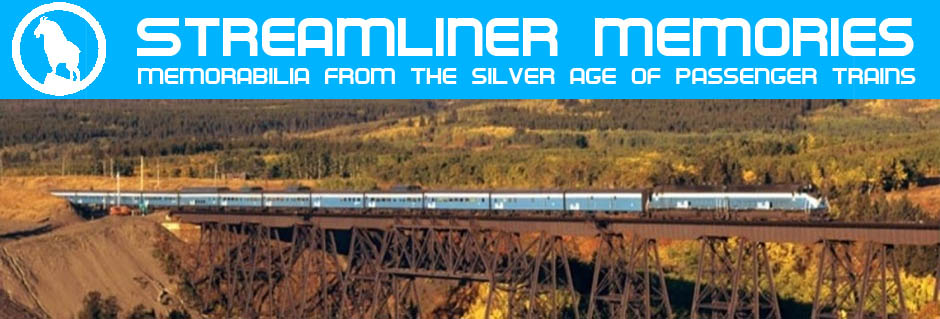The Depression was ending, finally, and Southern Pacific and its partner railroads were increasing their passenger service. This timetable advertises the San Francisco Challenger, an economy train inspired by the success of Union Pacific’s Challenger to Los Angeles. This timetable notes that Southern Pacific’s entry into the economy-fare Chicago-Los Angeles route was the Californian, but that train couldn’t compete with the faster El Capitan and Challenger.
 Click image to download a 29.5-MB PDF of this 56-page timetable.
Click image to download a 29.5-MB PDF of this 56-page timetable.
The introduction of the San Francisco Challenger increased service on the Chicago-San Francisco route from three named trains in 1936 to five named trains in 1937. One of the 1936 and two of the 1937 trains operated only five times a month: the City of San Francisco and Forty-Niner. With steam power and heavyweight equipment, the Forty-Nine took longer than the streamliner: 49 hours, which is probably part of the reason for the name.
The other new train advertised in this timetable is the Dallas-Houston Sunbeam. This was a non-stop, steam-powered streamlined train that made the trip in 4 hours and 25 minutes, quite a bit faster than the 6-1/2 hours used by the pre-streamlined train but still slower than Burlington’s 4 hour and 10 minute San Houston Zephyr.
The new trains may be part of the reason why Southern Pacific timetables grew from 48 pages in early 1936 to 56 pages in this one. Actually, the SP’s December, 1936 timetable also has 56 pages. Some of the new pages are used for advertising, but some provide more detailed schedules of long-distance and local trains. The number of timetables printed was also increased from 100,000 to 110,000, as indicated by printer marks on the front cover.
